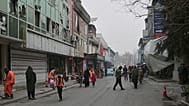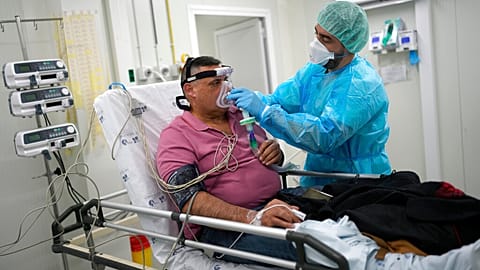A model using artificial intelligence (AI) technology can detect if all of the cancerous cells have been removed during breast cancer surgery, a new study has shown.
Researchers in the US say they have developed a new artificial intelligence (AI) model that can predict if cancerous tissue has been entirely removed during breast cancer surgeries.
They say that this could increase the chances that all of the cancer cells are removed and prevent patients from having multiple procedures.
A faster process for patients
After a surgeon removes a cancerous tumour and a small amount of the healthy tissue around the cancer, the tissue is reviewed with a mammogram and by specialists.
A pathologist will look to see if cancer cells remain present on the edge of the tissue removed to determine if there is a chance that cancerous tissue remains in the breast.
But the pathologist’s tests can take up to a week, according to the study authors at the University of North Carolina (UNC).
“Some cancers you can feel and see, but we can’t see microscopic cancer cells that may be present at the edge of the tissue removed. Other cancers are completely microscopic,” said senior author Kristalyn Gallagher, an associate professor at UNC.
“This AI tool would allow us to more accurately analyse tumours removed surgically in real-time, and increase the chance that all of the cancer cells are removed during the surgery. This would prevent the need to bring patients back for a second or third surgery,” she added in a statement.
AI model performed as well as humans
The researchers’ AI model works by being trained on a large amount of data - in this case, hundreds of mammogram images and corresponding pathologist reports.
Eventually, the model was able to differentiate the positive from the negative margins in the images. It turned out to be as efficient as humans “if not better”, the researchers said.
The findings were published in the Annals of Surgical Oncology journal.
“It is like putting an extra layer of support in hospitals that maybe wouldn’t have that expertise readily available,” said Shawn Gomez, a co-author and professor of biomedical engineering and pharmacology.
“Instead of having to make a best guess, surgeons could have the support of a model trained on hundreds or thousands of images and get immediate feedback on their surgery to make a more informed decision,” he added.
According to Cancer Research UK, most breast cancer treatment begins with surgery.
More trials are needed before the model could be used “clinically” but after that, it could be helpful for hospitals with fewer resources, the researchers said.


















